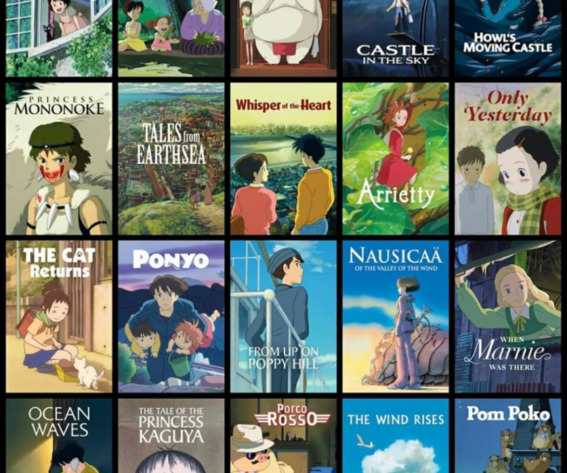Very few animated films have resonated with me as profoundly as those created by Studio Ghibli. If you don’t know, Studio Ghibli is a prominent Japanese animation studio wielding significant influence within the animation industry. Besides full-length films, the studio has boldly ventured into various creative avenues, producing art such as short films, commercials, and even two television movies.
The studio’s artistic pursuits have garnered widespread acclaim and numerous prestigious awards. At the heart of Studio Ghibli’s identity stands Totoro, an iconic and cherished character embodying the essence of the studio. Inspired by raccoon dogs (tanuki) and cats, this larger-than-life spirit made its entrancing debut in the 1988 anime masterpiece, “My Neighbor Totoro.”
Among the standout achievements in Studio Ghibli’s repertoire are its box office triumphs, including the enchanting “Spirited Away” (2001), the whimsical “Howl’s Moving Castle” (2004), and the heartwarming “Ponyo” (2008). The studio’s genesis can be traced back to June 15, 1985, when visionary directors Hayao Miyazaki and Isao Takahata, alongside producer Toshio Suzuki, established the studio, an event marked by acquiring Topcraft’s assets.
Furthermore, Studio Ghibli has expanded its creative reach through collaborations with video game studios, lending its artistic vision to developing several gaming projects. So, what is it that bestows this studio with its enchanting charm? Let’s delve into the magic!
Hayao Miyazaki
At the helm is Hayao Miyazaki. As a co-founder of Studio Ghibli, he has achieved global recognition as a virtuoso storyteller and the creative force behind Japanese animated feature films. Miyazaki is commonly hailed as one of the most accomplished filmmakers in the annals of animation history.
Born in Tokyo City in the Empire of Japan, Miyazaki displayed a keen fascination with manga and animation from his formative years. In 1963, he embarked on his professional journey by joining Toei Animation. During his nascent tenure at Toei Animation, his initial role involved working as an in-between artist, and he would go on to establish a fruitful collaboration with the esteemed director, Isao Takahata.
Common Themes
Studio Ghibli films shine in their ability to delve into universal themes that resonate with audiences worldwide. Through compelling narratives and captivating animation, these movies, unified by these shared themes, whisk us away to imaginative realms where environmentalism, friendship, family, Japanese history and conflict, optimism vs pessimism, and love occupy the spotlight.
Studio Ghibli vs Pixar
As you can imagine, there’s often a debate and comparison between Studio Ghibli and Pixar. Personally, I love both studios and have enjoyed plenty of films from the two over the years. While Studio Ghibli may have more intense and denser characters, Pixar films have a unique ability to appeal more universally.
While Pixar’s CG animation has made remarkable strides in technical prowess, the awe-inspiring hand-drawn artistry of Studio Ghibli resides in a league entirely of its own, unchallenged and unparalleled. Conversely, Pixar has the numbers and more extensive catalog that many may find more appealing.
Personal Favorites
My Neighbor Totoro (1988)
Logline – When two girls move to the country to be near their ailing mother, they have adventures with the wondrous forest spirits who live nearby.
Spirited Away (2001)
Logline – During her family’s move to the suburbs, a sullen 10-year-old girl wanders into a world ruled by gods, witches, and spirits, a world where humans are changed into beasts.
Grave of the Fireflies (1988)
Logline – A young boy and his little sister struggle to survive in Japan during World War II.
Howl’s Moving Castle (2004)
Logline – When an unconfident young woman is cursed with an old body by a spiteful witch, her only chance of breaking the spell lies with a self-indulgent yet insecure young wizard and his companions in his legged, walking castle.

















